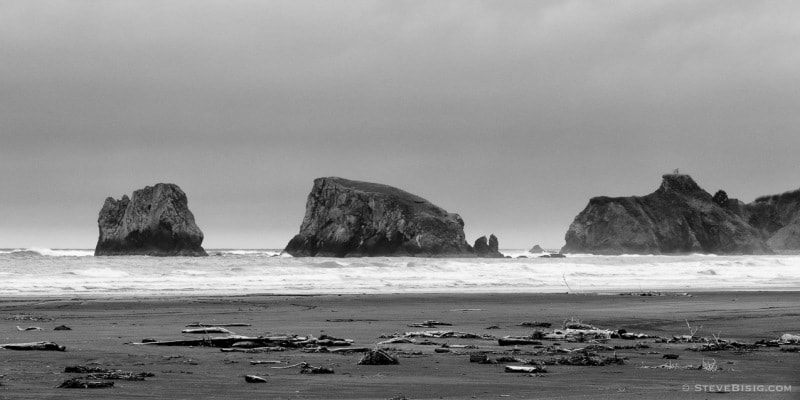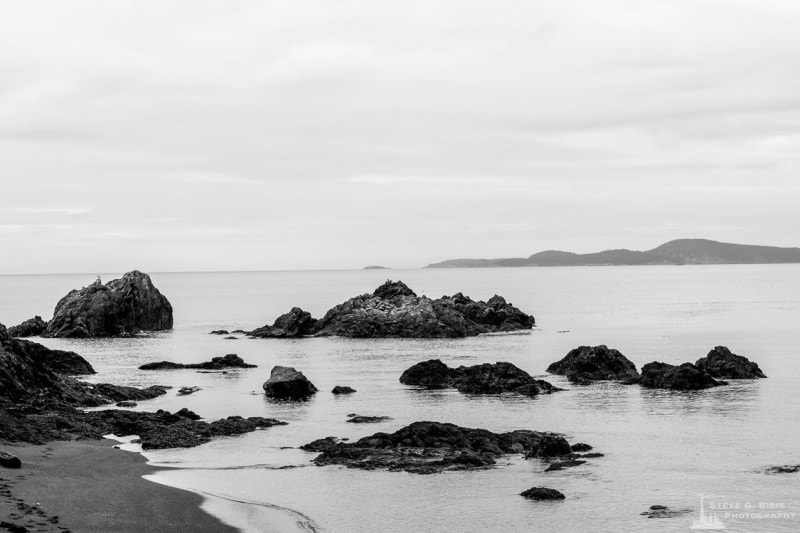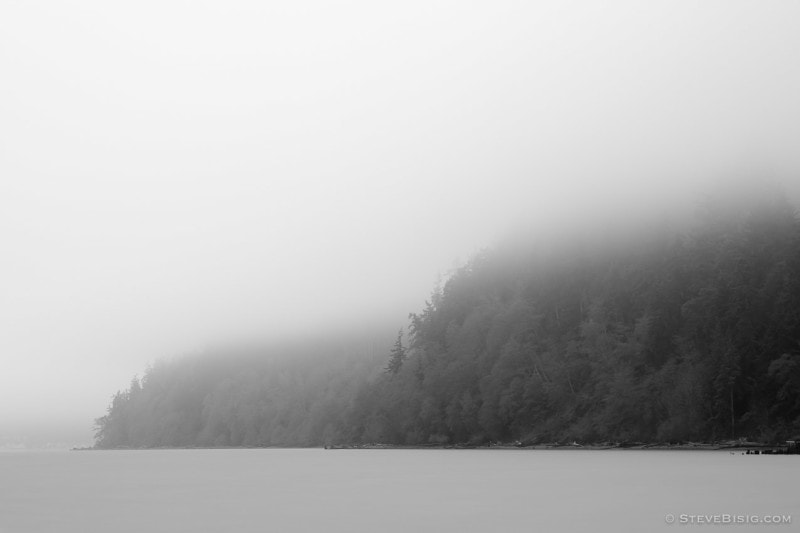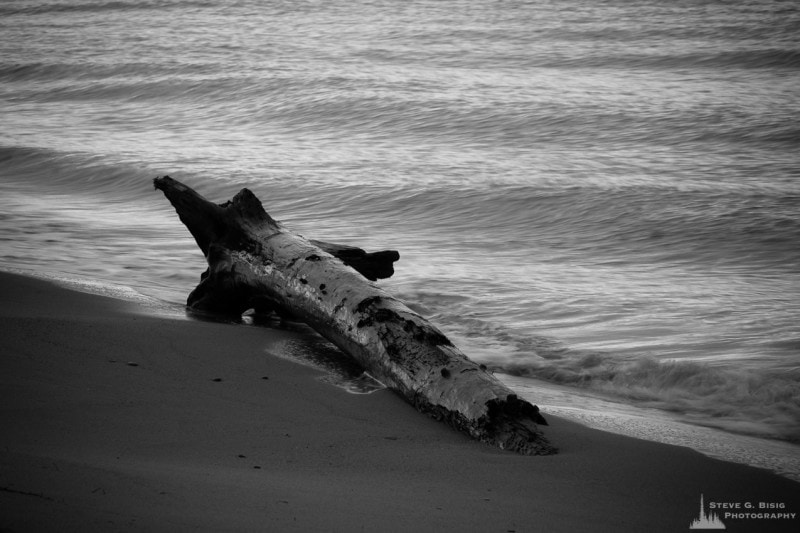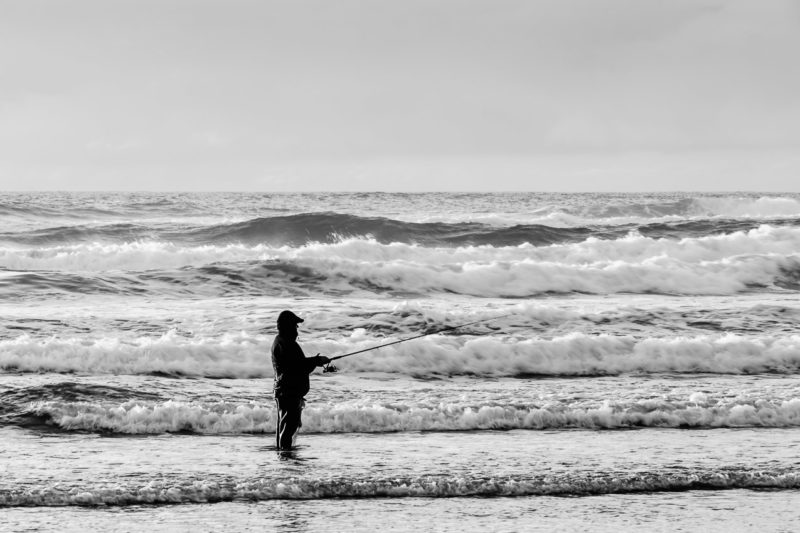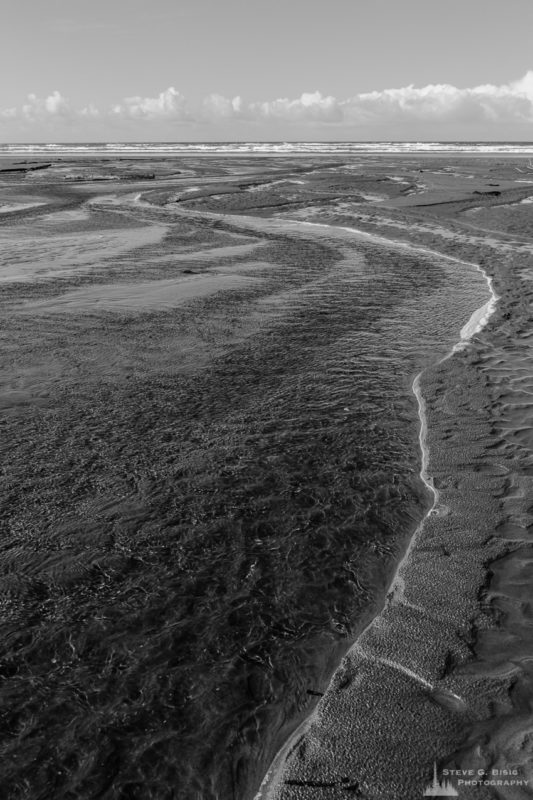
–Purchase Print–
After a several hours drive, I arrived late morning on the Washington Coast at South Beach (the beach between Westport and North Cove, Washington). The weather provided for on and off rain showers with a steady, stiff breeze coming right off the Pacific Ocean.
I just caught the tail end of a rain squall as I was driving down the beach in my Land Cruiser.
The South Beach area of the Washington State coast is basically a featureless landscape (from a photography perspective) primarily consisting of sand, surf, and sky.
To add a little variety to my landscape photographs, I stopped at various creek crossings along the beach to break up the scene.
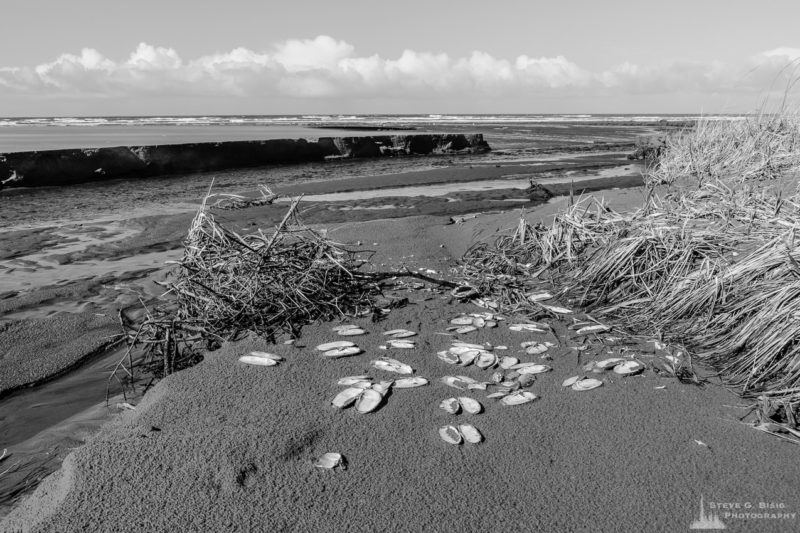
–Purchase Print–
Further down State Route 105, I found a few potential spots that would provide nice foreground elements for a landscape photograph, but my timing was off due to the harsh light and those locations would have to wait for another day.
While not technically South Beach, I drove into Tokeland, Washington and photographed an old abandoned dock and pilings not far from the marina.
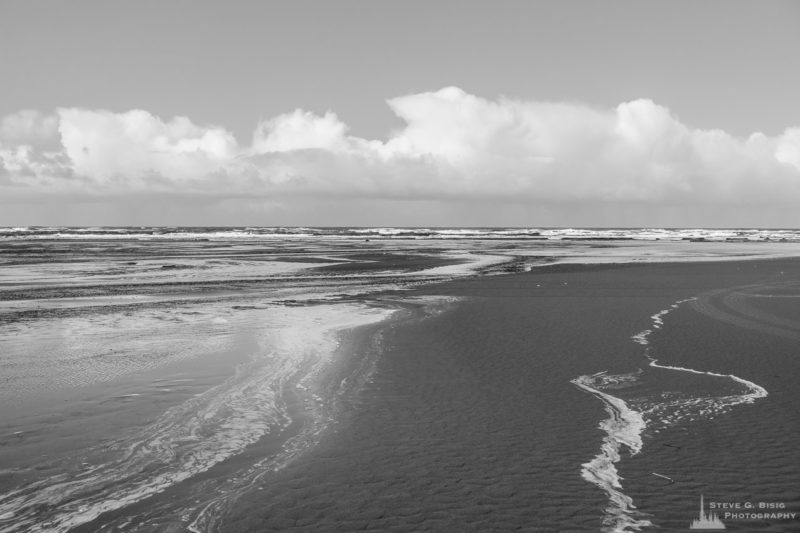
–Purchase Print–
I’ve been recently asked how do I make the decision to process an image as a black and white photograph. There are several considerations that are important to me.
- There are certain scenes that I feel must be (usually) processed in color (golden hour light, autumn colors, sunsets, and sunrises, or any scene where color is an important element to name a few).
- I don’t put my camera away midday. I’m always looking for high contrast scenes with shapes or textures to create black and white photographs.
- Many times I find monochromatic scenes without a lot of color make for a great black and white photographs. Some examples for me include snow and beach scenes.
These aren’t hard and fast rules for me, for I break them all the time. Many times it’s just a gut feeling on whether or not I choose color or monochromatic processing.
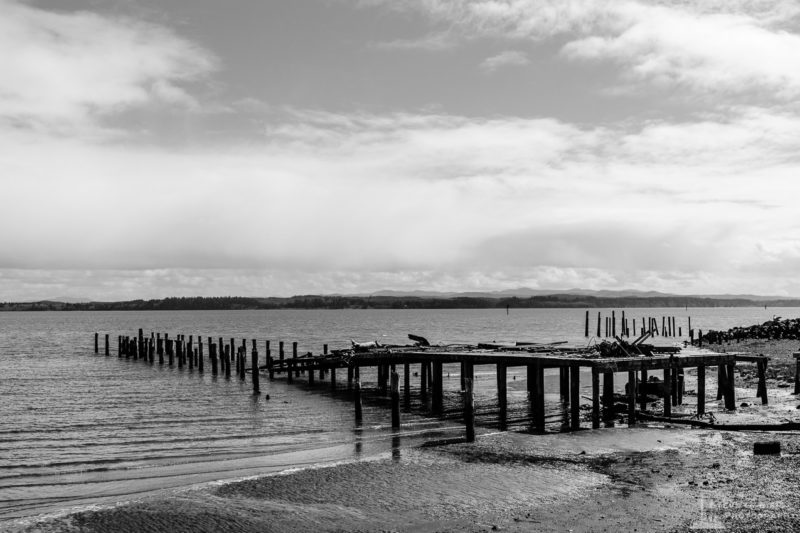
–Purchase Print–
The next leg of the day’s exploration would take me along the shores of Willapa Bay (see my blog post at Exploring the Coast of Willapa Bay, Washington, Winter 2017)


